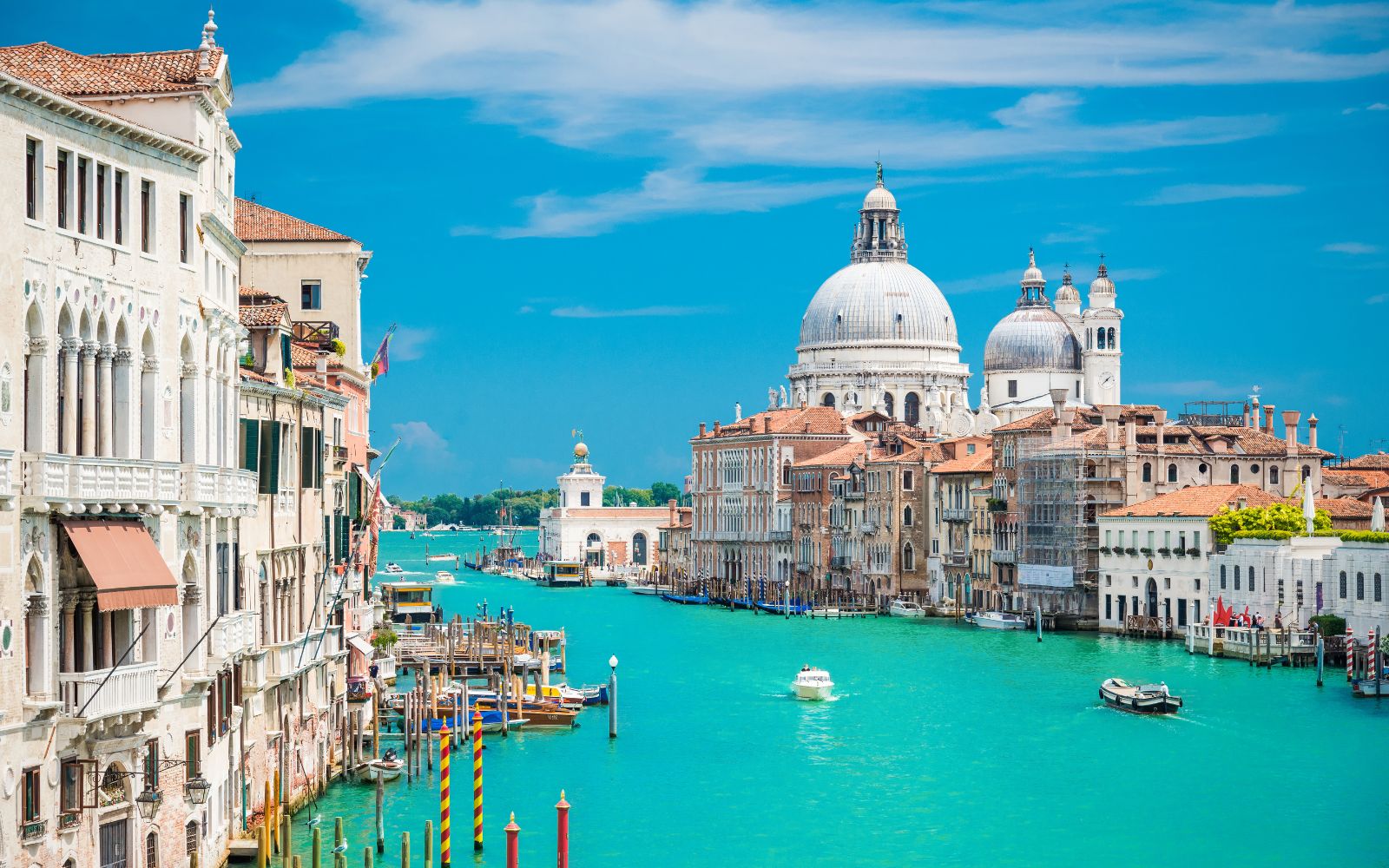
Whether you’re looking for glistening Mediterranean beaches, bustling cities, world-class hiking and skiing, ancient history, or rolling hillsides and vineyards, Italy has it all. However, the best time to visit Italy truly depends on what it is you want to do there.
July and August tend to be the most popular months to visit Italy. The weather is usually hot and sunny; perfect for long days at the beach. However, these months are also often the most crowded and expensive times to visit il bel paese (the beautiful country).
Other than in the country’s ski resorts, winter is usually the quietest and cheapest time to visit Italy and the Italian winters can be cold, especially in the northern part of the country where snowfall is fairly common.
Overall Best Time To Visit Italy
Italy is one of the world’s most popular tourist destinations with amazing things to see and do during each month of the year.
I’ve traveled to Italy many times and at various times of the year, but my favorite time to visit is the shoulder season (April-May, and September-October) when the temperatures are warm but not too hot, prices are lower, and the crowds are smaller than during the summer.
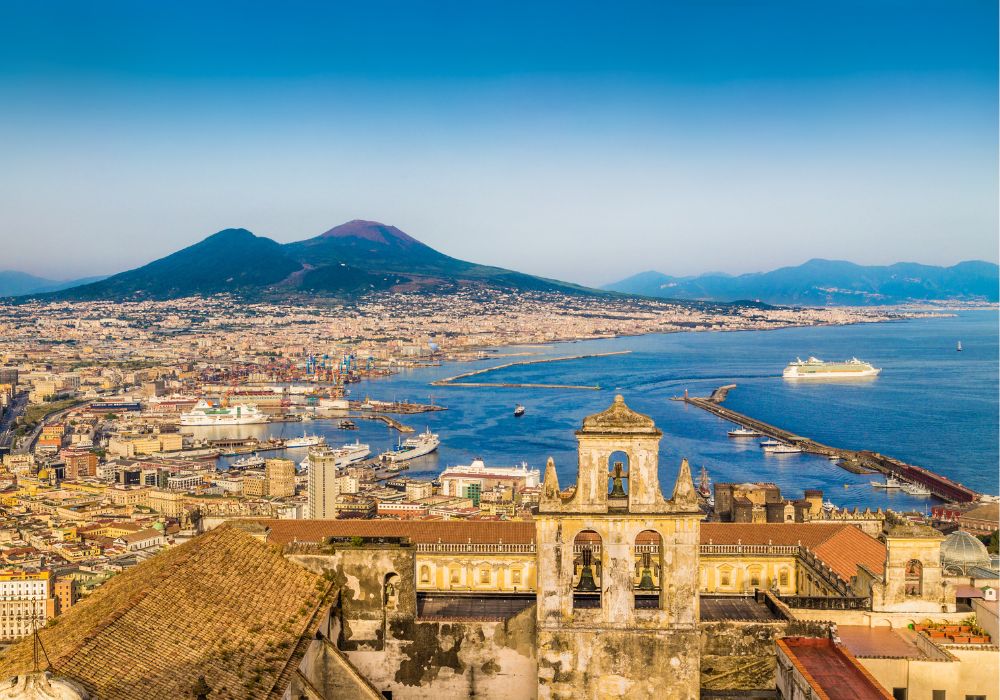
Shoulder season is also arguably the best time to go to Italy if you’re interested in visiting the country’s enormous wealth of historical sites, exploring its beautiful cities, or hiking in the Italian Alps.
Peak Season in Italy (June-August)
The summer months coincide with the peak season for tourism in Italy. Each summer, vast numbers of international tourists flock to Italy to enjoy the country’s unique culture, history, and cuisine.
During these months, Italy’s more famous cities are flooded with tourists from all over the world. The country’s iconic monuments and archaeological sites can become particularly crowded with both local and international visitors.
Prices are also at their highest during the peak summer season. Unless you’re coming for a beach holiday, I’d personally try to avoid traveling to Italy during the peak summer season if at all possible (especially in July and August).
Shoulder Season in Italy (March-May and September-October)
Shoulder season (springtime and late summer/autumn) is the best time to travel to Italy in my opinion. I always try to visit during these months when planning a trip.
The weather is usually pleasantly warm and prices are lower than during peak season. You can expect some other visitors besides yourself, but nowhere near as many as during peak season.
Shoulder season is a great time of year to explore Italy’s many wonderful cities, historical sites, and hiking trails.
Off Season in Italy (November-February)
If you really want to escape the other tourists, the winter months can be a good time to visit Italy.
I visited Pompeii in January and it was fantastic! I almost had the whole place to myself, and the winter light was magical. If you’d like to take a guided tour of Pompeii with a knowledgeable archeologist, this tour has excellent reviews.
Most of the major attractions and tourist sites remain open during the off-season period, and you can get some amazing deals on accommodation.
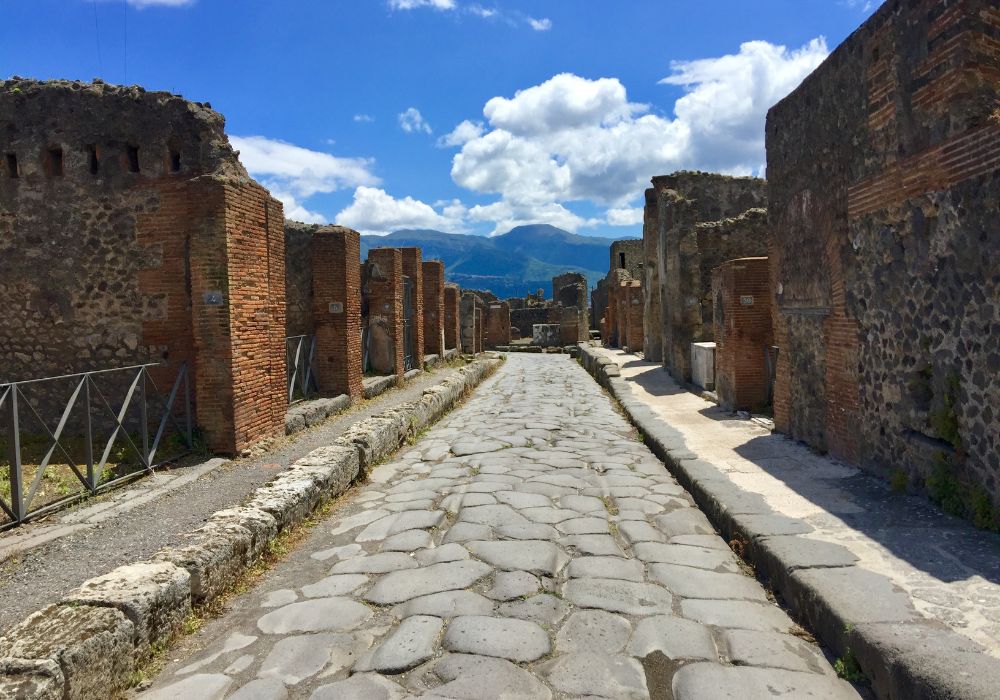
However, quite a few restaurants and bars shut down over the winter (especially in smaller places), and your entertainment and accommodation options may be a little more limited.
When to Visit Italy For Beaches
For many people, summer (June-August) is the best time to visit Italy’s beaches. The weather is hot and sunny most days and the Mediterranean Sea is pleasantly warm – perfect for swimming and snorkeling.

Some of the best beach destinations to visit in Italy in the summertime include Polignano a Mare (in Puglia), Tortoli (in Sardinia), and the beautiful island of Capri.
When to Visit Italy For Festivals
Italy is a country known for its vibrant festivals; from its colorful medieval carnivals to hedonistic music festivals. These are held throughout the year, so there’s no leading time to visit Italy if you’re looking for festivals.
A few of the best and most noteworthy festivals in Italy include the Carnival of Venice (February), the Palio di Siena (July/August), and the Lemon Festival in Monterosso, Cinque Terre (May).
When to Go to Italy For Cities
Italy has more than its fair share of iconic and beautiful cities. Rome, Venice, Naples, Milan, Florence, Siena… the list goes on!
These can be visited throughout the year, but my favorite time of year to explore Italy’s cities is during the springtime (March-May).

The flowers are in bloom, the light is soft and magical, and best of all, there are far fewer tourists around than during peak season.
When to Visit Italy For Historical Sites
Italy’s vast wealth of historical sites need no introduction. This is the land of Pompeii, the Vatican, Saint Mark’s Square, and the Colosseum after all!
As you’d expect, these iconic world-famous sites can get incredibly busy. To enjoy them at their least crowded (and most spectacular), I recommend coming off-season.

As long as you’re happy to wrap up warm, January is a great month to visit Italy for historical sites. You’ll have far fewer other visitors to contend with and you won’t have to worry about getting too warm whilst walking around.
When to Visit Italy For Whale Watching
The best time to go whale watching in Italy is during the autumn (September-November). This is when you’ll have the greatest chance of seeing a large variety of whales in the Mediterranean.
You can join whale-watching tours from various ports along the Italian coast, including La Spezia and Livorno (in Tuscany), or from the Amalfi Coast.
See here for a selection of whale and dolphin-watching tours that you can join in Italy.
When to Travel to Italy For Cheap Prices
Generally speaking, the best time of year to visit Italy for cheap prices is during the winter off-season (November-February). Accommodation in particular is often much cheaper in the winter than during the peak season (outside of the ski resorts, of course).
Be prepared to potentially contend with some bad weather though, especially in the northern areas of the country. Also, some hotels, restaurants, and tour operators shut down over the winter, especially in more out-of-the-way locations.

If that doesn’t bother you, wintertime can be a great time to visit Italy for budget travelers.
When to Visit Italy For Hiking
Italy is a fantastic destination for outdoor activities, including hiking. The best time to visit Italy for hiking is the shoulder season, either April-May or September-October.
Most trails will be open but not too crowded, and the weather is likely to be warm but not too hot. In springtime, you’ll be treated to some stunning displays of wildflowers, while in autumn you’ll get to enjoy the spectacular fall colors.
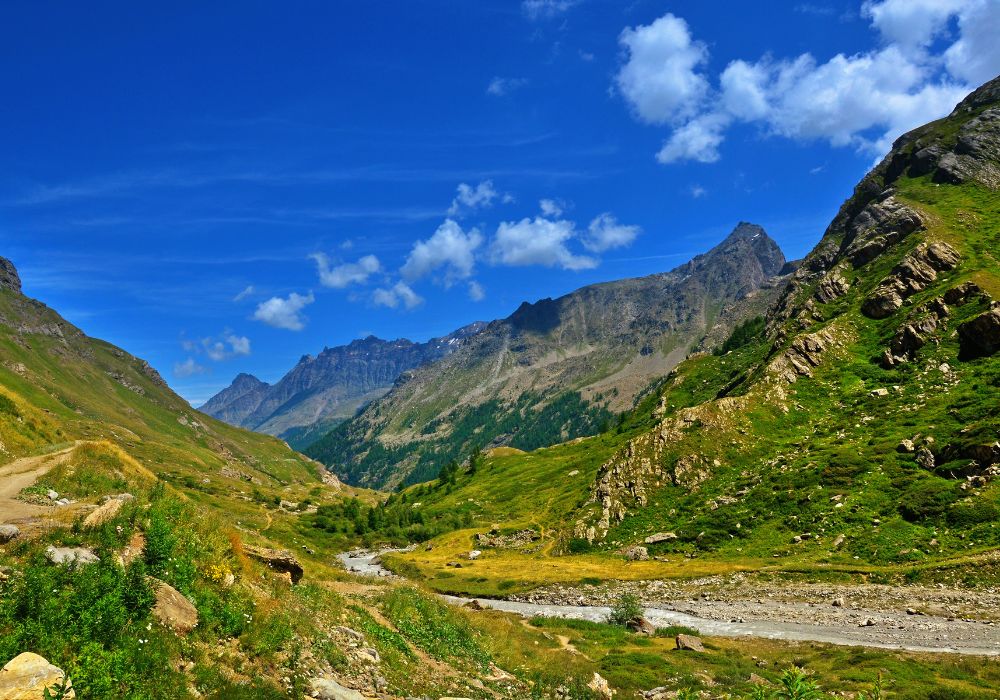
Based on my personal experience, my top picks for areas to hike in Italy include the Dolomites, Gran Paradiso National Park, and the Valle d’Aosta.
The Best Time to Visit Italy By Month
The best time to travel to Italy depends on what it is you plan to do there. To help you decide when to visit Italy, I’ve broken down what each month of the year is like, including the weather and things to do.
Italy in January
January in Italy is an ideal month for budget travelers looking to explore the country’s historical sites.
Weather in Italy in January
Italy is a cold month in much of Italy. Freezing conditions are common across much of the northern half of the country and Italy’s mountainous and upland areas often receive significant snow in January.
The weather is usually a little better in the south, where temperatures are milder, but it still may be too cold for many outdoor activities.
Things To Do in Italy in January
January is a great time to visit Italy for sightseeing and to enjoy the country’s incredible historical sights. You can expect fewer crowds at iconic sites such as the Colosseum, and take advantage of lower-priced accommodation.
See here for an excellent guided tour of the Colosseum, the Forum & Palatine Hill in Rome.
January is also one of the best months for skiing in Italy. The country’s numerous ski resorts are in full swing, offering world-class skiing adventures, especially in the Italian Alps.

For a fascinating local experience, check out the Fair of Sant’Orso, an Alpine crafts fair in the town of Aosta. Here, local craftspeople come together to display and sell their products on the streets, including woodwork, handmade leather, woven goods, and ironwork. The fair has taken place at the end of January every year for the last 1,000 years!
Italy in February
February sees Italy begin to come alive again as winter winds down and the days become longer.
Weather in Italy in February
The weather in Italy during February is generally milder than in January, with temperatures gradually climbing throughout the month. Snow is still common at higher altitudes, but many lowland areas start thawing after the long European winter.
If you’re looking for somewhere warmer during February in Italy, head to the south. Sicily and the Amalfi Coast can be surprisingly pleasant in February, with temperatures often reaching into the mid-teens (Celsius).
Things To Do in Italy in February
February is a good time to visit Italy for sightseeing. Tourist attractions and museums will be quieter than in the summer months and you’re more likely to get better deals on accommodation.
Take advantage of the sunny days that allow you to explore Italy’s beautiful coastline without the crowds. The Amalfi Coast in particular is heaving with tourists in the summer but is wonderfully quiet and particularly peaceful in February making this a perfect time to visit.

This is one of the top-reviewed tours of the Amalfi Coast that takes you to the beautiful towns of Positano, Amalfi, and Sorento (departing from Naples).
February is also another great month for skiing in Italy. The higher parts of the Italian Alps are typically still covered with powder snow, and the resorts are open.
Many Italians go skiing in December and January, so it’s often possible to find good deals on accommodation and equipment rentals in February as things start to quieten down.
Italy in March
March in Italy is a great time to explore the country as temperatures start to rise and the days become longer still.
Weather in Italy in March
Temperatures in March gradually climb, with average highs reaching into the mid-teens (Celsius) across much of the country. It’s even warmer in the far south, often reaching up to 20°C.
Snow will still be present in many mountainous regions, but it starts to thaw rapidly. Popular regions such as Sicily, the Bay of Naples, and the Italian Riviera are pleasant and, mostly, crowd-free.
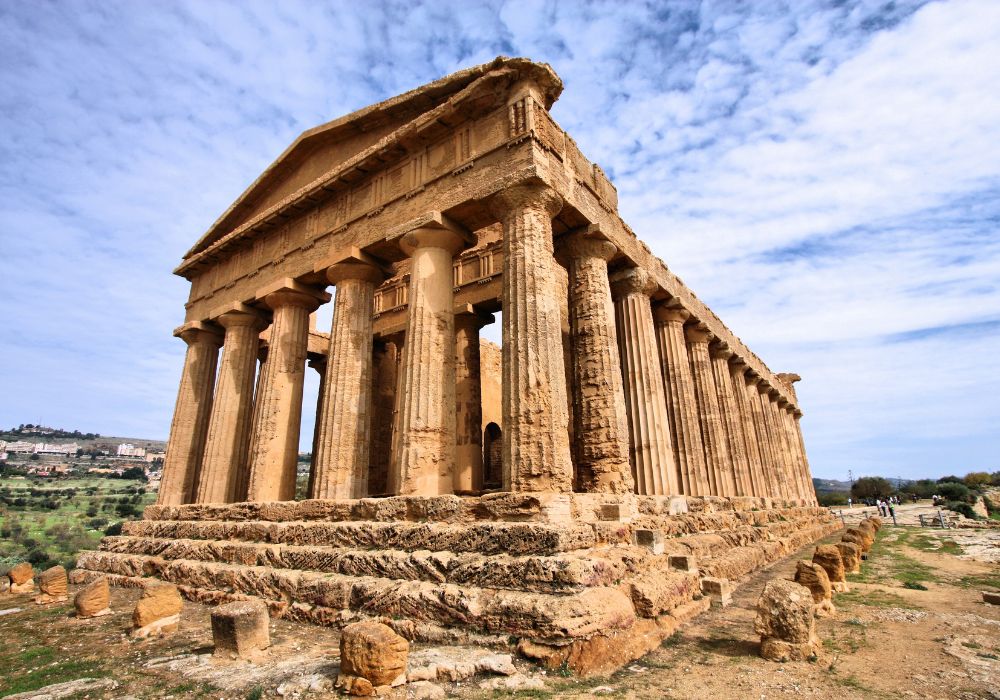
March often sees a fair amount of rainfall across northern and central Italy, so pack some waterproofs if you plan to visit at this time.
Things To Do in Italy in March
March is a great time to visit some of Italy’s best-known cities, such as Rome and Florence. The winter weather will be largely over, but the crowds will not yet have descended en masse.
March is also ideal for exploring some of Italy’s outdoor attractions as you can take advantage of the milder temperatures and longer days. Take a leisurely stroll through Rome’s historic streets or explore the Amalfi Coast on foot without having to worry about building up too much of a sweat.
Italy in April
April is a beautiful month to visit Italy, with colorful springtime flowers covering the hillsides and town squares.
Weather in Italy in April
The weather across Italy in April generally ranges from mild to warm, with temperatures rising as you travel further south. In the northern regions, expect highs of around 20°C, while down south temperatures often reach upwards of 25°C.
Overall, it usually rains less in April than in March, although you should still expect an odd rainy day here and there.
Things To Do in Italy in April
April is one of the best months for hiking in Italy. The mountains are covered in a blanket of wildflowers and the mild weather makes it ideal for long walks and hikes.
The more popular towns and cities start to receive greater numbers of visitors but rarely feel too crowded. There are springtime festivals, markets, and outdoor concerts to attend in most towns and cities, so you won’t be short of things to do.
If you’re thinking of heading to Tuscany in the springtime, be sure to catch Scoppio del Carro (Explosion of the Cart) which takes place on Easter Sunday in Florence. As part of this traditional ritual, a procession takes place through the streets of the city and a symbolic model dove is used to set off an enormous fireworks display from a 500-year-old oxcart.

April is also a great time to visit Sicily, which can be unpleasantly hot during the summer months.
Italy in May
May is a wonderful time to visit Italy. The weather starts to warm up nicely making it perfect for outdoor activities such as sailing, hiking, and exploring the country’s attractive coastal towns.
Weather in Italy in May
The weather in May is generally warm and sunny, although it’s usually cooler and damper at higher altitudes. Temperatures across the country typically range between 20-25°C during the day but can reach up to 30°C in the south.
It doesn’t usually rain much in May in Italy, but the odd shower can still occur.
Things To Do in Italy in May
In May the temperatures are usually warm enough for swimming in the sea throughout most of the country. The Mediterranean islands of Sicily and Sardinia offer some of the best beaches in the region and May is an amazing time to enjoy them before the summer crowds arrive.
In May, Italy is alive with outdoor activities and events. From wine tasting in the Tuscan countryside to mountain biking through the rolling hills of Cilento, there are plenty of ways to enjoy the best of Italy’s landscapes.
In Venice, the Sposalizio del Mare (Marriage of the Sea) festival takes place on the last weekend of May. As part of this, an enormous flotilla of boats processes from St Mark’s Square to the Port of St Nicoló, and several sprints and other water races are held in front of thousands of onlookers.
While you’re in Venice, I also recommend checking out this excellent guided tour of the Doge’s Palace and St. Mark’s Basilica.
Italy in June
June marks the first month of summer and the start of the high season in Italy.
Weather in Italy in June
June is a great time to visit Italy if you’re looking for warm and sunny weather. The majority of Italy experiences temperatures in the mid-20°Cs or above, and it rarely rains, although you may experience the occasional thunderstorm.
Things To Do in Italy in June
Music festivals can be found across some cities offering jazz, pop, and classical concerts outdoors. Water sports such as sailing or canoeing are excellent experiences for those looking for an extra dose of adventure during their stay. Be sure to use plenty of sunscreen though – the Italian summer sun is strong!

For a truly unique experience head out on a truffle hunt in Tuscany or take one of the many excellent cooking classes that can be found throughout the country. Do as the locals do and enjoy as many meals as possible al fresco.
June is also peak firefly season in some parts of Italy (including Liguria and Umbria). If you’re lucky enough to catch a glimpse of this natural spectacle it’ll be an experience to remember. Just head out into the countryside in the evenings and keep your eyes open!
Italy in July
July is one of the hottest, busiest, and most expensive months to visit Italy.
Weather in Italy in July
Southern Italy is usually very hot in July, with temperatures regularly reaching 35°C in many regions. The north tends to be slightly cooler, although 30°C is still a fairly common daytime temperature.
Rainfall is rare, especially down south, and the country often experiences droughts in the summertime. It’s usually cooler in the mountains and other upland areas, which can be nice places to escape the relentless heat.
Things To Do in Italy in July
In July, I recommend avoiding Italy’s most popular tourist areas (like Rome, Cinque Terre, and the Amalfi Coast). These will be heaving with other tourists and the prices shoot up considerably.
Instead, visit one of the country’s stunning national parks where you can escape the crowds. Stelvio National Park and Puez-Odle Nature Park in the Italian Alps have the added bonus of being somewhat cooler than most of the rest of the country and are among the most pleasant places to be in July.
Take a boat trip around Lake Como, or Lake Garda (the largest lake in Italy), where you can enjoy the fantastic scenery and picturesque little towns from the water.

If you’re a fan of jazz music, head to the Umbria Jazz Festival, which is held over 10 days in July in the historical city of Perugia. This is one of the biggest and best jazz festivals in the world and top performers come here every year to do their thing. As an added bonus, many of the outdoor concerts are free!
Italy in August
August is another hot, dry, and busy month throughout much of Italy.
Weather in Italy in August
August is often the hottest month of the year in Italy, with temperatures reaching the mid-30°Cs (or higher) in cities like Florence and Rome. The Mediterranean islands and southern regions like Puglia and Calabria are even hotter – expect temperatures in the high 30°Cs.
Rainfall is rare across most of the country, although there can be thunderstorms, especially towards the end of the month, after extended periods of high pressure.
Things To Do in Italy in August
If you like the heat, August can be a great time to spend time on Italy’s fantastic beaches. The most popular ones will likely be packed with both tourists and locals. However, there are still plenty of quieter spots to enjoy, such as Spiaggia Su Capitulu in Sardinia or Tonnara di Scopello in Sicily.
If you’d prefer to stay somewhere a little cooler, check out some of Italy’s beautiful mountain towns where the temperatures tend to be a little lower. Two of my favorites are Cortina d’Ampezzo (the hiking is epic here) and Bardonecchia – both in the Alps.
The Palio di Siena is a loud, adrenaline-fuelled festival that takes place twice a year in the beautiful Tuscan city of Siena. One of these dates is August 16, when the city gathers in the central Piazza del Campo to watch colorfully dressed riders racing laps of the square on horseback. It’s one of the most iconic and historical festivals in the Italian calendar.
Italy in September
September is one of my favorite months to visit Italy.
Weather in Italy in September
The weather is usually lovely in Italy in September. It’s warm but not too hot, and the evenings are mild (although you may need to pack a sweater if you want to sit outside after dinner).
You can expect the odd rainstorm, which is desperately needed after the long, dry summer. But it rarely rains for more than a day, so shouldn’t affect your trip too much.
You’ve probably already figured this out, but the south is usually hotter than the north in September too. Expect temperatures in the early-30°Cs in the south and mid-20°Cs in the north.
Things To Do in Italy in September
If you’re into sailing, September is a perfect time of year to do this. I spent a week sailing around the Maddalena archipelago in northern Sardinia last September and it was absolutely fantastic.
The sea is warm – perfect for swimming and snorkeling – and the sun shines most days (but is nowhere near as strong as in July or August). Here’s a great one-day sailing tour in this area.

Alternatively, head to the hills of Tuscany or Umbria and enjoy a delicious bottle of Chianti Classico as you watch the sunset over rolling vineyards.
Italy in October
October is when autumn arrives in Italy.
Weather in Italy in October
October can be a mixed month for the weather in Italy. It’s often pleasant and sunny during the day and mild in the evenings, so you’ll want to pack a few extra layers.
However, rainfall is more common than during the summer months – especially in the northern half of the country and towards the end of the month. It shouldn’t be enough to ruin your trip, although you should be prepared for the weather not to be perfect every day.
Things To Do in Italy in October
Barring excessive rainfall, October is often a good month for hiking in Italy. The weather should still be mild enough to enjoy a hike, and the crowds will have mostly left by now, so you’ll find peace and tranquility in the mountains.
The Dolomites in northeast Italy are stunning at this time of year. Gran Paradiso National Park in the northwestern Piedmont region is also home to some epic hiking trails among the stunning scenery and breathtaking autumnal colors.
October is also a great time to visit Italy’s cities, like Rome, Naples, or Florence. Daytime temperatures are perfect for sightseeing and the evenings can be pleasant too. Alternatively, head south to Sicily, check out the markets in Palermo, and stroll around the beautiful streets.
Italy in November
November marks the start of the off-season in Italy.
Weather in Italy in November
The weather often takes a turn for the worst in November. You can expect a lot of rain, especially towards the end of the month. Temperatures also start to drop quite significantly, especially in the north.
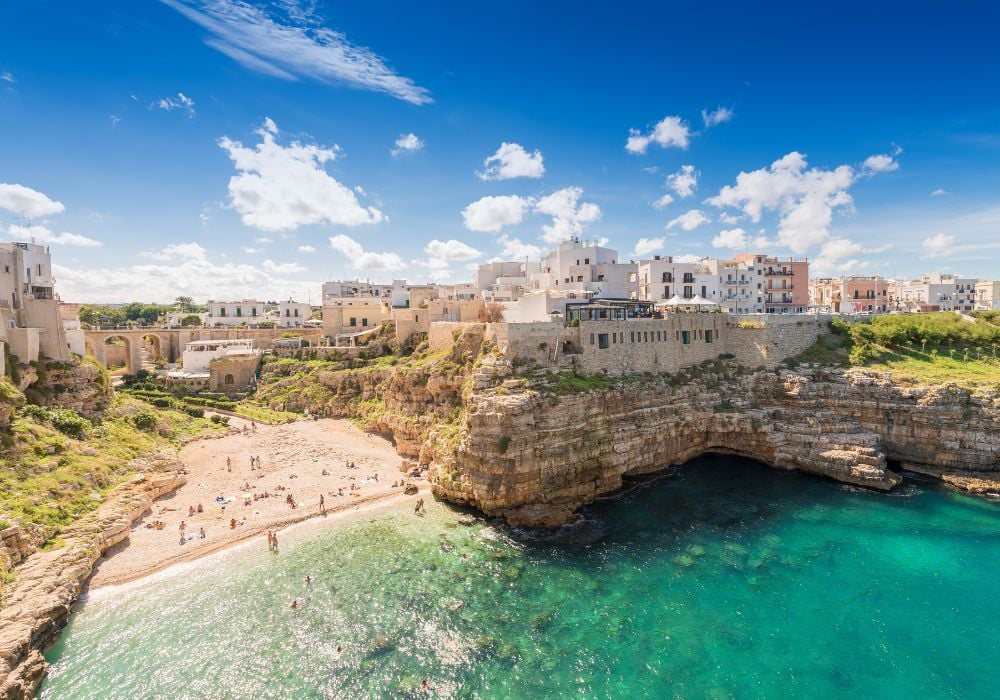
You’re more likely to have good weather in the southern regions of Puglia, Calabria, and Sicily in November, but even then, it’s not guaranteed.
Things To Do in Italy in November
Although much of the country will be wet during November, this can be a great time to explore some of Italy’s cities. Places like Rome and Florence receive far fewer visitors in November so you’ll be able to explore them comfortably without the crowds.
If the weather takes a turn for the worst, head indoors to check out some of Italy’s world-class museums such as the Uffizi Gallery in Florence, the Vatican Museums in Rome, or the National Archaeological Museum in Naples.
Prices are often lower in November as this is off-season. This can be one of the best months to visit Italy if you’re looking to save some money on accommodation and activities.
Italy in December
Italy is a majority Catholic country and December is an incredibly festive and atmospheric time to visit, as people start gearing up for the traditional Christmas celebrations.
Weather in Italy in December
December is cold in Italy, with temperatures dropping well below freezing in the northern parts of the country. Be prepared for rain, snow, and icy winds.
The further south you go, the milder it will be – especially in Sicily, which is usually the warmest part of Italy in December.
Things To Do in Italy in December
Despite the grim weather, the atmosphere is festive throughout the country, with Christmas markets popping up in most towns and cities.

Some of the best places to visit in December include Rome, where you can take a stroll around the city’s iconic streets and enjoy the festive decorations and holiday spirit. Venice is also picturesque in December, with far fewer crowds than most other times.
In Conclusion
Italy is a wonderful country to visit any time of year. With its varied landscapes, delicious food, and enormous wealth of culture and history, there’s no shortage of things to see and do whenever you choose to come.
The best time to visit Italy really depends on the kind of experience you’re looking for. Every month has something unique and special to offer; whether you’re looking to chill on its golden beaches or throw yourself down its snow-covered peaks. Whenever you choose to visit Italy, you’re sure to have an amazing time.